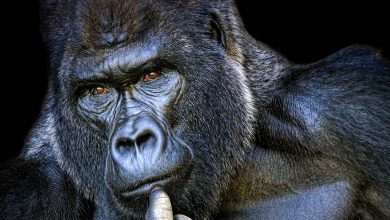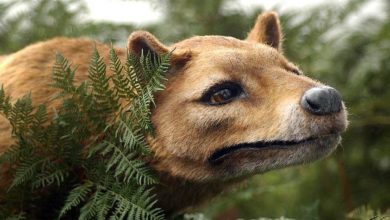Munchkin cat, Sausage cat
Munchkin – dachshund among cats
The breed is not recognized by several felinological federations, including the FIFe. The reason for this is a genetic mutation within the breed. It is responsible not only for extremely short limbs, but also for numerous serious diseases, including achondroplasia, which causes limb bone development disorders and dwarfism. However, this is not the whole truth about the Munchkin cat, for which the saying “Don’t judge a book by its cover” is true.
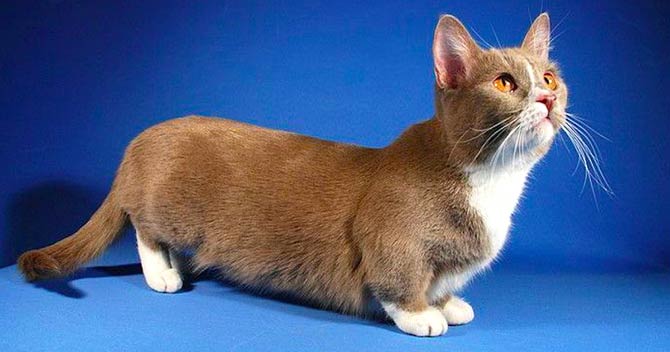
History of the breed
Cats with short legs have been known since the 1940s. According to reports by British veterinarians in 1944, there were 4 generations of healthy short-legged cats. They resembled normal cats, but were distinguished from others by their very short limbs. Many years later, in 1983, Sandra Hochenedel, a music teacher from Louisiana, found two pregnant cats. She decided to adopt one of them and name it Blackberry.
The cat soon gave birth to young, half of which had short legs. One of the unusual puppies was adopted by Sandra’s friend, who named her new friend Toulouse. Officially, therefore, Balckberry and Toulouse are considered the founders of the new breed.
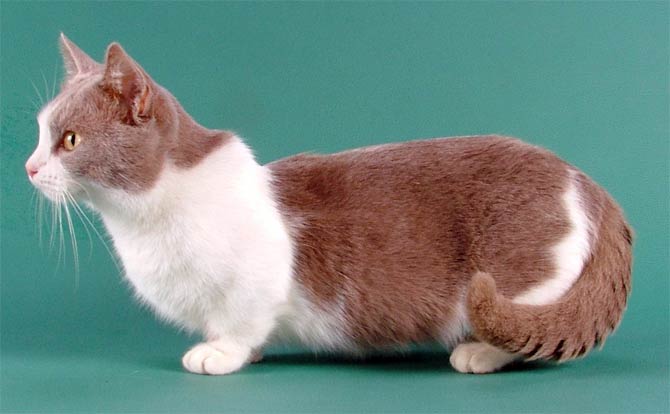
Characteristic
Appearance
It does not stand out with anything special except for extremely short limbs. The front legs are shorter than the hind legs. The rest of the body is the size of a cat of medium size. Within the breed, there are both long-haired and short-haired cats (the long-haired variety is called Munchkin Longhair and has a separate classification from the short-haired variety). All possible patterns and colors are also allowed.
A spontaneous genetic mutation caused by the dominant gene is responsible for the length of the legs. The embryos that inherited this feature from both parents are not able to develop in the mother’s womb (then we are dealing with a lethal allele, i.e. causing the death of the organism).
However, if a fetus has inherited the short leg gene from one of its parents, it will be born but endowed with extremely short limbs. Within the breed, however, there are long-legged cats, but this applies to about 1/3 of kittens born in a given litter.

Controversies
Despite its unusual appearance, the breed is not very popular with cat lovers. Potential owners are concerned that short legs and a long spine contribute to the occurrence of lordosis (curvature of the spine towards the ventral side).
Similar complications occur with other short-legged pets, mostly dachshunds. However, specialists believe that the Munchkin’s backbones are built differently, so they do not have similar problems. However, this does not convince all felinological federations.
The Governing Council of the Cat Fancy (GCCF) refuses to recognize the Munchkins as it believes their existence as a race is based on poor build and development. FIFe and CFA (The Cat Fanciers’ Association) have a similar opinion.

Temperament
Its sweet nature goes hand in hand with a cute little face. It is very fond of people, is full of initiative and shows high intelligence. It loves stroking and caressing, as well as various games. Short limbs do not prevent him from climbing trees, jumping and fighting with other cats.
Because it is self-confident and very sociable, it will suit cheerful, open-minded owners. Munchkins are often referred to as “magpies” among owners because they sometimes steal small, shiny objects.
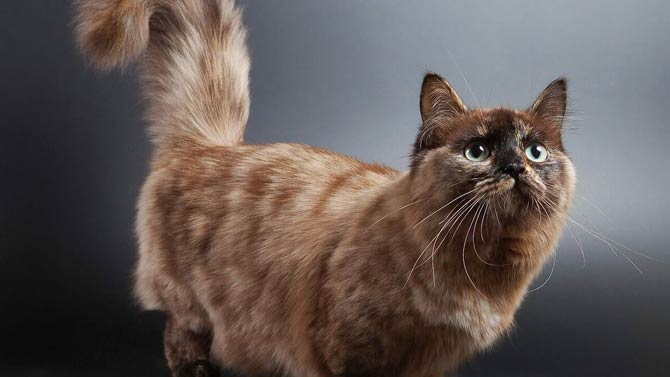
Health condition
A mutation in the munchkin breed is responsible for the development of dwarfism, known as achondroplasia. This condition is usually associated with enlargement of the skull and shortening of the limbs. However, this combination of features does not occur in the described cats. It is therefore believed that the disorders associated with short limbs in Munchkins are rather hypochondroplasia or pseudoachondroplasia (dwarfism due to shortening of the limbs).
There were also suspicions of back problems similar to those with dachshunds. X-ray examinations, however, ruled out this view. Nevertheless, it seems that cases of lordosis and funnel-shaped chest are more common within the race. Both disorders are also observed in humans with pseudoachondroplasia.

Detailed data / dimensions (size)
Munchkin cat
- Height at the withers: 17-20 cm (6.7 – 7.9 in)
- minimum 13.34 cm (5.25 in)
- Weight:
- male 2.7-4 kg (6 – 8.8 lb)
- female: 1.8 – 3.6 kg (4 – 8 lb)
- Lifespan: 12-14 years

Munchkin – interesting facts
- The breed is named after the fictional Munchkin region, featured in the book The Wonderful Wizard of Oz. According to the author, Lyman Frank Baum, the Munchkin Country (Oz region) was a city of short people wearing only blue clothes.
- The world’s lowest cat in 2014 was a Munchkin named Lilieput from Napa, California. The height at the withers was 13.34 cm (5.25 in), thanks to which the animal was entered in the Guinness Book of Records.









